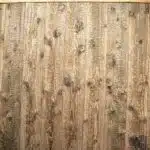Wine enthusiasts know the importance of storing wine correctly to preserve its flavor, aroma, and quality. A wine rack is an essential piece of furniture for any avid wine collector as it provides a safe and organized storage solution for bottles. Making your own wine rack offers several benefits such as cost savings, customization options, and the satisfaction of completing a DIY project.
As a wine rack design expert, I understand the importance of creating a functional and aesthetically pleasing storage solution that complements your home décor. In this article, I will guide you through the process of making your own wine rack using simple tools and materials readily available at your local hardware store. Whether you are a beginner or an experienced DIY enthusiast, this step-by-step guide will help you create a unique and practical wine rack that adds value to your home while serving others with style and elegance.
Choosing The Right Design For Your Space
Designing a wine rack that suits your space and aesthetic preferences is essential to ensure that it not only fulfills its purpose but also adds beauty to the room. It is like choosing an outfit that complements your body type and accentuates your features. Space optimization is key when selecting a wine rack design. The size of your collection and the space available should be considered to avoid clutter or overcrowding.
Aesthetic appeal is another important factor in choosing a wine rack design. It should match the interior design of your room, whether it’s modern, rustic, or traditional. You can choose between various materials, such as wood, metal, and glass, depending on your desired look. A well-designed wine rack adds value to any space by creating a focal point while showcasing your collection.
Selecting the right design for your space may seem overwhelming at first, but considering factors such as space optimization and aesthetic appeal will make the process easier. Once you have decided on a suitable design, selecting the materials for your wine rack comes next. This step involves selecting materials based on their durability and functionality while ensuring they complement the overall look of your wine rack.
Selecting The Materials For Your Wine Rack
When selecting the materials for your wine rack, it is crucial to consider the wood type that you want to use. The type of wood will play a significant role in the durability and appearance of your wine rack. Cedar and pine woods are commonly used in wine racks due to their strength and resistance to decay. However, if you want a more premium look, you might consider mahogany or oak.
Another important factor to consider is the color scheme of your wine rack. Most people prefer their wine racks to match the overall theme of their home decor. You can choose from light-colored woods such as birch, maple, and beech for a contemporary feel or dark-colored woods like walnut and cherry for a more traditional look. A combination of both light and dark colors can also create an attractive contrast.
In conclusion, selecting the right materials for your wine rack plays a vital role in achieving functionality and aesthetics. When choosing wood types, consider its durability and resistance to decay, while color schemes must match the overall theme of your home decor. Once you have selected these materials, measuring and cutting your wood pieces can begin with precision.
Measuring And Cutting Your Wood Pieces
As the saying goes, measure twice and cut once. This holds true for creating your own wine rack. Before starting, it is important to carefully consider your wood selection. Not all woods are created equal when it comes to durability and aesthetics. Hardwoods such as oak and cherry are popular choices due to their strength and beautiful grain patterns. Softwoods like pine can also work well if properly treated and finished.
Once you have selected your wood, it is time to start cutting. It is crucial to use the correct cutting techniques to ensure a perfect fit for your wine rack pieces. A miter saw or circular saw can be used for making precise cuts at different angles. A table saw is useful for ripping boards down to size or creating grooves for shelving. Always remember to wear protective gear such as safety glasses and gloves when operating power tools.
With your wood pieces cut to size, the next step is sanding and finishing your wine rack. But before we get ahead of ourselves, it is important to emphasize the importance of careful measuring and cutting in the initial stages of this project. Taking the time to select quality wood and using proper cutting techniques will ensure a sturdy and visually appealing wine rack that will serve you well for years to come.
Sanding And Finishing Your Wine Rack
Now that you’ve measured and cut your wood pieces, it’s time to move on to the next step of creating your own wine rack: sanding and finishing. Before starting, make sure you have all the proper tools needed on hand, including sandpaper, a sanding block or power sander, a paintbrush or cloth for staining, and any protective gear required.
Sanding is an important process in creating a smooth and even surface for your wine rack. Begin by using coarse-grit sandpaper to remove any rough edges or imperfections in the wood. Then gradually work your way up to finer grits until you achieve the desired level of smoothness. Be sure to wipe away any dust with a clean cloth before moving on to staining.
When it comes to staining techniques, there are many options available depending on the look you want to achieve. Some popular choices include traditional oil-based stains, water-based stains for a more eco-friendly option, or even natural dyes made from fruits or vegetables. Whichever method you choose, be sure to apply evenly and allow ample drying time before handling the wood again.
Now that you’ve sanded and stained your wood pieces, it’s time to move onto assembling the base of your wine rack. But before we get into that step, let’s review some tips for properly staining your wood pieces. Remember to always wear protective gear when working with stains and be sure to test out different techniques on scrap pieces of wood before applying them to your wine rack. With these tips in mind, let’s move onto assembling the base of our wine rack!
Assembling The Base Of Your Wine Rack
To assemble the base of your wine rack, you will need a few basic tools and materials. These include a saw, wood glue, clamps, screws, and a drill. You’ll also need to purchase or cut pieces of lumber according to the dimensions of your design. Once you have all of these items ready, you can begin assembling the base.
First, use your saw to cut the wood into appropriate sizes for your design. Next, apply wood glue to the edges that will be joined together and clamp them tightly until they dry. Then use screws and a drill to secure the pieces together for added stability. A sturdy base is essential to ensuring that your wine rack can hold up under the weight of multiple bottles.
When it comes to staining techniques for your wine rack’s base, there are several methods you can choose from depending on the type of wood and finish you desire. One popular option is to use a gel stain which allows for more control over color saturation compared to liquid stains. Another technique is using vinegar and steel wool solution which reacts with tannins in the wood creating an aged effect. Whatever method you choose, make sure to apply multiple coats of stain for optimal durability.
Now that you have successfully assembled and stained your wine rack’s base, it’s time to move on to adding the first layer of wine bottle holders. Using your measurements and preferred spacing between each holder, attach them securely onto the base using screws or dowels. With this step complete, you’re one step closer towards having a functional and beautiful piece that will serve as both storage and decor in your home!
Adding The First Layer Of Wine Bottle Holders
The first layer of a wine rack is the foundation upon which all other layers will be built. When designing the first layer, spacing considerations are critical to ensure that each bottle holder can accommodate a standard-sized wine bottle. Wine bottles come in different shapes and sizes, so it is essential to measure the spacing between each holder carefully.
Alternative materials can also be utilized when constructing the first layer of a wine rack. Wood is a popular choice for wine racks; however, metal and plastic can also be used. Metal offers durability and strength, while plastic provides flexibility and ease of assembly. It is important to consider the aesthetic appeal of alternative materials before making your final decision.
Once spacing considerations and material choices have been made, securing the first layer in place becomes the next step in building your own wine rack. This involves using screws or nails to attach each bottle holder to the frame securely. The process may vary depending on the material used for construction but ensuring that each holder is level and secure will prevent potential accidents or damage to your wine collection.
Securing The First Layer In Place
- Before constructing a wine rack, the appropriate amount of wood needs to be cut to the correct measurements.
- When cutting the wood, safety precautions should be taken in order to ensure accuracy and minimize errors.
- It is important to measure and mark the wood correctly in order to ensure the wine rack pieces fit together properly.
- When fastening the pieces of the wine rack, the correct type of screws and hardware should be used to ensure durability.
- Adhesive should be applied to the pieces of the wine rack in order to provide additional support and stability.
- Special attention should be paid to the corners of the wine rack to ensure that each piece is securely fastened in place.
Cutting The Wood
To create a sturdy and reliable wine rack, wood selection and cutting techniques are crucial. Your choice of wood can affect the overall stability and aesthetic appeal of your wine rack. It’s best to choose hardwoods like oak or maple for their strength and durability. Softwoods like pine may be cheaper, but they are prone to warping and cracking over time.
Once you have selected your wood, it’s time to start cutting. Before you begin, make sure you have all the necessary tools such as a saw, measuring tape, and sandpaper. When cutting the wood, precision is key. Measure twice and cut once to avoid mistakes that could ruin your project.
There are various cutting techniques you can use depending on the design of your wine rack. For instance, if you plan on making angled cuts for a more intricate design, a miter saw would be ideal. However, if you’re making simple straight cuts, a circular saw or table saw can do the job just fine. Remember to always wear protective gear when using power tools to avoid accidents or injuries. With careful consideration of wood selection and proper cutting techniques, you’ll be able to create a beautiful wine rack that will impress your guests for years to come!
Measuring And Marking
As a wine rack design expert, the process of creating a sturdy and reliable wine rack does not end with selecting the best wood and cutting techniques. Measuring techniques and marking tools are also important factors to consider when securing the first layer in place. Before proceeding with assembling the wine rack’s first layer, it is crucial to measure accurately to ensure that the spacing between each bottle slot is even.
Measuring techniques are vital in achieving an aesthetically pleasing wine rack design. To do this, you can use measuring tools such as rulers or calipers to get precise measurements of your wood pieces. Marking tools like pencils or chalk can be used to mark where each cut should be made. This will help ensure that all cuts are made correctly and that each piece fits together perfectly.
To secure the first layer in place, precision and accuracy are essential. The slightest error can cause misalignments or make it difficult for other layers to fit properly. Therefore, it is important to take your time with measuring and marking before beginning assembly of the wine rack’s first layer. By doing so, you can create a sturdy and beautiful wine rack that will serve its purpose for many years to come!
Fastening The Pieces
After accurately measuring and marking the wood pieces, the next crucial step in securing the first layer of a wine rack is fastening them together. Using power tools such as a drill or screwdriver can make this process easier and more efficient. When choosing screws or nails, it is important to consider their length and thickness to ensure they securely hold the wood pieces together.
When fastening the pieces together, it is essential to make sure that each piece is aligned correctly. Misalignments can cause instability in the wine rack, making it difficult to decorate or even causing damage to your bottles. It is also important to avoid over-tightening screws or nails, as this can cause wood splitting or cracking.
After successfully securing the first layer in place, you can begin decorating your wine rack according to your personal preferences. Some people prefer a simple and minimalist design, while others may choose to add decorative elements such as carvings or paint. Whatever your style may be, remember that functionality should always come first when designing a wine rack. With proper measurement, marking, and fastening techniques in place, you can create a sturdy and reliable wine rack that will be both functional and aesthetically pleasing for years to come.
Adding The Second Layer Of Wine Bottle Holders
As you move on to the next step of creating your wine rack, get excited about being able to fit even more bottles in your custom-designed storage unit. Before adding the second layer of wine bottle holders, take a moment to consider what spacing options are available to you. The distance between each holder will determine how many bottles can be accommodated and how easy it is to access them.
Once you’ve decided on your spacing, it’s time to add decorative accents. This layer presents a great opportunity to add some visual interest to your wine rack. You could opt for ornate designs or keep it simple with clean lines. Whatever you choose, make sure that the decorative elements align well with the style of your home and the rest of your decor.
With the spacing and decorative accents in place, it’s time to secure the second layer in position. This is an important step as it ensures that each bottle is held securely and won’t fall out or be damaged over time. Ensure that each piece fits snugly into place before moving on to adding additional layers if desired. With this second level complete, you’re one step closer to having a beautiful and functional wine rack that will impress all who see it.
Securing The Second Layer In Place
Nailing is a popular method of attaching materials together, especially when constructing a wine rack. Screwing is also common, as it provides a more secure hold than nails. Glueing and dowelling can be used to strengthen joints and create a more secure fastening. Bolting, bracing, stabilizing, reinforcing, anchoring, gluing, doweling, fastening, joining, attaching, and clamping are all other methods of securing the second layer in place when making a wine rack.
Nailing
To secure the second layer of your wine rack, you’ll need to nail it in place. There are different types of nails that can be used for this purpose, but it’s important to choose the right one based on the type and thickness of wood you’re using. For thinner wood, a small finishing nail may suffice, while thicker wood will require something stronger like a framing nail.
Proper technique is crucial when nailing the second layer into place. Make sure to align the wood properly before nailing and use a hammer or nail gun at an angle to avoid splitting the wood. It’s also important to space out your nails evenly along each board and ensure they’re flush with the surface. Taking these steps will not only help keep your wine bottles safe and secure, but will also ensure your wine rack looks clean and polished.
In summary, choosing the right type of nail and using proper technique are essential when securing the second layer of your wine rack. By doing so, you’ll create a sturdy foundation for your wine bottles that not only looks great but functions well too. So take your time, measure twice, and don’t be afraid to ask for help if needed – soon enough you’ll have a beautiful new addition to your home that’s perfect for entertaining guests or simply enjoying a glass of wine after a long day.
Screwing
To ensure the sturdiness of the second layer of your wine rack, it’s important to secure it in place properly. While nailing is a popular option, screwing can also be an effective method for securing your wine rack. This subtopic will discuss the preparation tips and screw types and sizes that you should consider when using screws to secure the second layer of your wine rack.
Before beginning to attach screws to your wine rack, make sure that you have all necessary tools on hand. These include a drill with a screwdriver bit, measuring tape, pencil or marker for marking where to drill holes, and appropriate screws. The type and size of screws you use will depend on the thickness of your wood and how much weight it needs to support. For thinner wood, smaller screws may suffice, while thicker wood requires larger ones.
When selecting screws for your wine rack, consider their length as well as their gauge. In general, a longer screw will provide more stability than a shorter one. Additionally, choosing a thicker gauge screw can help prevent snapping or breaking under pressure. It’s also important to make sure that the head of each screw is flush with the surface of the wood so as not to interfere with bottle placement.
In summary, using screws instead of nails can be an effective way to secure the second layer of your wine rack in place. Preparation is key when using screws – make sure you have all necessary tools on hand before beginning and select appropriate screw types and sizes based on your specific needs. By following these tips and ensuring proper alignment before attaching screws, you’ll create a sturdy foundation for storing your favorite wines in style.
Attaching The Top Piece To Your Wine Rack
After securing the second layer in place, the next step is attaching the top piece to your wine rack. Before you begin, ensure that all your joints are well reinforced to prevent any wobbling or instability. Some wine rack designs may require pre drilling holes to make screwing easier, while others may not.
When it comes to choosing appropriate screws, it’s crucial that you opt for ones that are of good quality and strong enough to hold up the weight of your wine bottles. Additionally, avoid using screws that are too long as they could split the wood. Always measure and choose screws that are just slightly longer than the thickness of your wood.
Once you’ve attached the top piece securely, it’s time to sand and finish it off. This will give your wine rack a smoother appearance and help protect it from moisture damage or scratches. Sanding down rough edges is essential for safety reasons so ensure you take this step seriously before proceeding with finishing touches such as staining or painting.
Sanding And Finishing The Top Piece
Sanding is an essential process for any woodworking project, as it ensures a smooth surface for the subsequent steps. Priming is necessary to ensure a good base for the paint or stain to adhere. Sealing the wood will help protect it from the elements and prevent premature deterioration. Painting is the best way to add color and style to the wine rack. Finishing will help to enhance the beauty of the project and protect the wood from moisture. Angles, measurements, and cuts must be precise when constructing a wine rack, so the appropriate tools should be used.
Sanding
To achieve a smooth and even finish on your wine rack, sanding is an essential step in the process. Fine grit sandpaper is recommended for this task as it helps to remove any rough patches or imperfections on the wood surface. Sanding also prepares the wood for staining or painting by creating a clean and uniform surface.
When it comes to sanding techniques, it’s important to work gradually and avoid applying too much pressure. Start with a coarse grit sandpaper to remove any major blemishes and then progress to finer grits for a smoother finish. Always remember to sand with the grain of the wood to prevent any unsightly scratches or marks.
Proper sanding not only enhances the visual appeal of your wine rack but also ensures its durability and longevity. Taking time to perfect this step will ultimately result in a beautiful finished product that you can proudly display in your home. Incorporating these simple yet effective sanding techniques will undoubtedly elevate your DIY wine rack project from ordinary to extraordinary.
Priming
Now that we have discussed the importance of sanding in achieving a smooth and even finish on your wine rack, let’s move on to the next step: priming. Priming is essential as it helps to seal the wood surface and prevent any bleed-through or discoloration when staining or painting.
When it comes to priming wood, there are certain tips that you should keep in mind. Firstly, make sure that the wood is completely dry and free from any dust or debris before applying primer. Secondly, use a high-quality paintbrush or foam roller to apply a thin and even coat of primer. Finally, allow ample time for the primer to dry before proceeding with the next step.
There are also some common mistakes that you should avoid when priming wood. These include applying too much primer, using an inferior quality product, and failing to sand the wood beforehand. By following these tips and avoiding these mistakes, you can ensure that your wine rack will have a flawless finish that will last for years to come.
Sealing
After sanding and priming your wine rack, the next step is to apply sealant. Applying sealant is essential as it provides a protective layer over the wood surface and enhances its durability. There are various types of sealants that you can use for your wine rack, such as polyurethane, lacquer, and shellac.
When it comes to choosing the right type of sealant for your wine rack, there are some factors that you should consider. Firstly, the level of sheen that you desire – whether you want a matte or glossy finish. Secondly, the level of protection that you need – whether you want a sealant that provides resistance against scratches or spills. Finally, the ease of application – whether you prefer a spray or brush-on sealant.
Once you have selected the appropriate type of sealant for your wine rack, it’s time to apply it. Make sure that the wood surface is clean and dry before applying sealant. Use a high-quality paintbrush or foam roller to apply a thin and even coat of sealant. Allow ample time for the first coat to dry before applying subsequent coats. By following these steps, you can ensure that your wine rack will have a beautiful and long-lasting finish.
Securing The Top Piece To Your Wine Rack
As you progress in building your wine rack, it is important to secure the top piece to ensure added stability and durability. Using brackets is an effective way of increasing the overall strength of your wine rack. By placing brackets at each corner and securing them with screws, you can prevent the top piece from wobbling or falling off.
After securing the brackets, it is time to stain and seal the top piece. This step not only adds a touch of style to your wine rack but also protects it from spills and moisture. Before staining, make sure that the surface is clean and smooth by sanding it down lightly. Once done, apply a layer of wood stain evenly and let it dry for a few hours before sealing it with a waterproof finish.
With the top piece secured and stained, you are now ready to move on to installing the hanging hardware. This is an important step in order to hang your wine rack safely and securely on any wall. By following these steps carefully, you will have a beautiful and functional wine rack that can accommodate all your favorite bottles while adding an elegant touch to any room in your home.
Installing The Hanging Hardware
After securing the top piece, the next step is to install the hanging hardware. There are various types of hanging hardware available in the market that can be used to mount your wine rack to the wall. It’s important to choose the appropriate type of hardware that will ensure the stability and safety of your wine rack.
Proper installation techniques are crucial when it comes to installing hanging hardware. Firstly, you need to measure and mark where you want your wine rack to hang on the wall. Secondly, use a level to make sure that it is straight and aligned with other objects in the room. Thirdly, drill pilot holes for screws or anchors into the studs behind the drywall. Lastly, attach your chosen hanging hardware onto these holes using screws.
To ensure that your wine rack stays securely mounted on your wall, follow these four tips:
- Use sturdy mounting hardware such as toggle bolts or heavy-duty screws.
- Make sure that all screws are fully tightened.
- Avoid installing near heat sources or areas with high humidity levels.
- Regularly check and tighten any loose screws or brackets.
Now that you have installed proper hanging hardware onto your wine rack, it’s time to mount it onto the wall. With caution and attention to detail, you can easily position and secure your wine rack in its rightful place.
Mounting Your Wine Rack To The Wall
Did you know that improperly mounted wine racks can lead to dangerous accidents? According to a recent study, over 20% of all wine rack-related injuries occur due to faulty wall mounting. This statistic highlights the importance of taking the necessary precautions when mounting your own wine rack. In this section, we will discuss the proper steps for safely and securely mounting your wine rack to the wall.
Before starting, make sure you have all the necessary tools and materials, including wall anchors and screws. The length of the screw will depend on the type of wall in which you are mounting your wine rack. For drywall, use screws that are at least 2 inches long. For plaster or masonry walls, use screws that are at least 3 inches long. Proper spacing is also important for stability and aesthetics. We recommend spacing each wine bottle holder about 3-4 inches apart from each other.
Once you have determined where you want to mount your wine rack on the wall, use a level to ensure it is straight. Then, mark where the screws should go with a pencil or marker before drilling pilot holes for the screws. Next, insert wall anchors into each pilot hole before attaching the wine rack to the wall with screws using a power drill or screwdriver. Finally, double-check that everything is level and securely fastened before hanging your favorite bottles of vino on your new beautifully mounted wine rack.
Transition: After following these steps and successfully mounting your new wine rack onto your desired wall space, it’s time to sit back and enjoy a glass (or two) of your favorite vintage while admiring your handiwork!
Enjoying Your New Wine Rack!
Now that your wine rack is securely mounted to the wall, it’s time to enjoy your new addition to your home. One of the best ways to do this is by hosting a wine tasting party with friends and family. There are a few tips you can follow to make sure your wine tasting is a success.
Firstly, make sure you have a variety of wines available for tasting. This can include different types of reds, whites, and rosés from various regions. Secondly, provide some snacks that pair well with the wines you are serving. For example, cheese and crackers are always a great option for pairing with wine. Lastly, encourage guests to try each wine before making any judgments on their preferences.
When it comes to pairing wine with food, there are some general guidelines you can follow. Red wines typically pair well with bold flavors such as steak or hearty pasta dishes. White wines are often paired with lighter dishes such as seafood or salads. It’s important to note that these are just suggestions and ultimately, personal preferences should dictate what pairs well together.
Hosting a successful wine tasting party can be both enjoyable and educational for all involved. By following these tips and experimenting with different pairings, you can become a true connoisseur of wine in no time!
Conclusion
When it comes to wine storage, a homemade wine rack can be an excellent addition to any home. The process of building your own wine rack can be an enjoyable and rewarding experience, but it does require careful planning and attention to detail. As a wine rack design expert, I recommend choosing a design that fits the space you have available and selecting high-quality materials that will last for years to come.
When measuring and cutting your wood pieces, precision is key. Be sure to sand and finish your wine rack properly to ensure a smooth surface that won’t damage your bottles. Assembling the base of your wine rack requires patience and accuracy, as it will form the foundation for the rest of the structure.
Once you’ve secured the top piece, installing hanging hardware is essential for safely mounting your new wine rack on the wall. With proper installation, you’ll be able to enjoy your favorite bottles of wine in style! Remember that building a homemade wine rack takes time and effort, but with careful planning and execution, anyone can create a beautiful and functional addition to their home.
Image Credits
- “Wine rack” by marcusjroberts (featured)
















![How To Repair Rotted Wood 16 Texture : Altario Buick Estate Wagon : Rotting Faux Wood Paneling [1 of 2]](https://green-life.blog/wp-content/uploads/2023/05/z1CersK-gCjq-150x150.jpg.webp)












